Natural disasters—earthquakes in particular—can strike with little warning, instantly turning the comfort and security of your home into chaos and uncertainty. For millions around the world, and especially for those living in regions where seismic activity is a growing threat, understanding what earthquake insurance covers is not just a matter of protecting property—it’s an essential pillar for safeguarding everything you’ve worked to build. Earthquake insurance gives homeowners and renters the peace of mind to face the unknown, knowing their finances, living arrangements, and treasured possessions have a safety net when disaster hits.
In today’s interconnected world, where climate change and rapid urbanization increase vulnerability, the risks associated with earthquakes have never been more widespread or unpredictable. Whether you live in a high-risk area like California, Tokyo, Istanbul, or even a city like Lagos with emerging urban infrastructure, the devastation an earthquake can cause underscores the importance of specialized insurance coverage. This comprehensive guide will walk you through the core elements of earthquake insurance, help you navigate what’s covered and what’s not, and provide global insights and actionable tips so you can be prepared, wherever life takes you. By investing in the right protection, you not only restore your home after disaster strikes but also reclaim your sense of stability and future security, no matter where you are on the globe.
What Is Earthquake Insurance? Why Is It an Essential Safeguard?
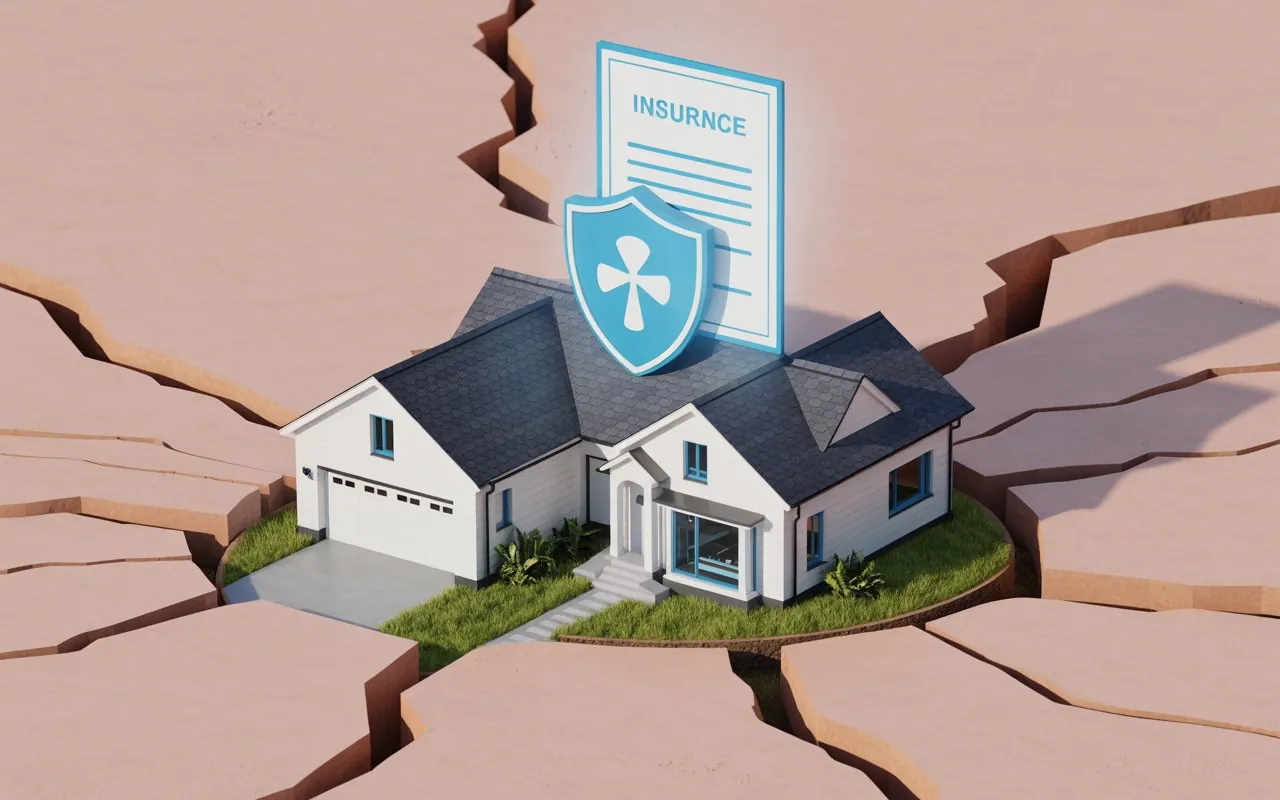
Earthquake insurance is a dedicated policy or add-on designed to pay for repairing or replacing your home and belongings after an earthquake. Most standard homeowners, renters, or condo insurance policies do not include earthquake coverage—making separate earthquake insurance vital if you wish to be protected against these unpredictable events.
Why Earthquake Insurance Is Critical
- Financial Security: Rebuilding or repairing after a quake can cost hundreds of thousands of dollars. Without insurance, homeowners often face these expenses alone.
- Widespread Risk: While some areas experience more frequent earthquakes, seismic activity is possible almost anywhere.
- Peace of Mind: With adequate coverage, you gain the confidence to rebuild your life, knowing you’ll receive support in a crisis.
Real-World Consequences of Being Uninsured
Homeowners without earthquake coverage risk losing their homes, assets, and stability after a major event. Many have turned to loans or government aid, which can be limited or slow—emphasizing the value of having robust earthquake insurance in place before disaster strikes.
What Earthquake Insurance Covers: The Essentials and Beyond
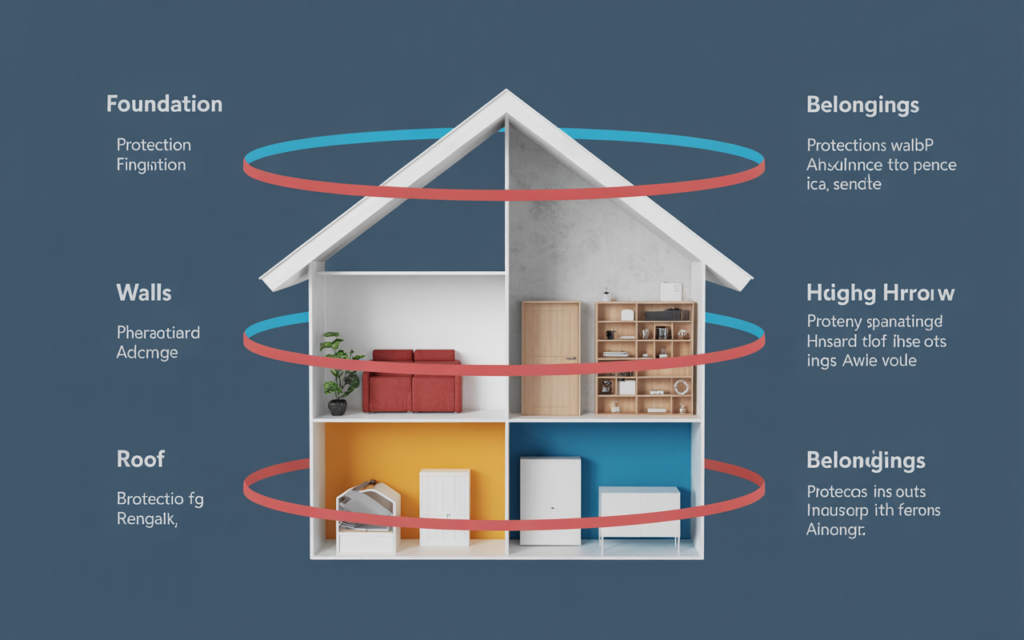
Understanding what earthquake insurance covers can save you enormous frustration and loss. While coverage specifics vary by provider and region, the following are core elements found in most policies worldwide.
1. Dwelling or Structural Coverage
This is the central component of earthquake insurance, protecting the physical structure of your home and any attached structures (such as garages, carports, porches, or decks). Coverage typically extends to:
- Foundations: Cracks, shifts, or collapse due to ground shaking.
- Load-Bearing Walls and Roofs: Structural repairs for damage.
- Built-In Systems: Electrical, plumbing, and HVAC systems, when affected by a quake.
- Attached Garages and Permanent Fixtures: Damage to built-in cabinets, chimneys, and garages.
Important: Many policies do not cover detached structures like sheds, standalone garages, fences, or pools unless specifically listed as covered.
Detailed Example
After a magnitude 6.2 earthquake in southern Italy, a homeowner discovered major cracks in the foundation and an entire wall partially collapsed. Their earthquake insurance covered structural repairs—valued at over $80,000—once the deductible was paid, showing the high costs that such events can bring.
2. Personal Property Coverage
Your possessions are valuable and, without coverage, are at risk of total loss after an earthquake. Earthquake insurance typically reimburses for:
- Furniture: Beds, sofas, dining sets, shelving.
- Electronics: Televisions, computers, kitchen appliances.
- Clothing and Footwear
- Major Appliances: Refrigerators, washers, dryers.
Key Caveats:
- Some items, such as jewelry, antiques, art collectibles, and certain electronics, may have sub-limits or require extra riders for full protection.
- Fragile items (like glassware and porcelain) may have limited or excluded coverage, unless supplemental insurance is taken.
Example Scenario
In Mexico City, a family lost several electronics and kitchen appliances after an earthquake. Their earthquake insurance enabled them to repurchase new items, minus a $5,000 cap for electronics set by the policy.
3. Additional Living Expenses (ALE) or Loss of Use
Loss of use coverage steps in if your home becomes uninhabitable, helping you maintain a normal life while repairs are underway. Typically, ALE covers:
- Hotel or Rental Costs: Temporary accommodation expenses if you must move out.
- Restaurant and Food Expenses: When you cannot prepare meals at home.
- Laundry and Storage Services: To keep your belongings safe and clean until you can return.
Practical Tip: Always keep receipts for accommodation, meals, and related costs after a quake, as insurers require documentation to process your claim fully.
Real-Life Example
A family in Los Angeles was forced to leave their home for four months during repairs. Their earthquake policy paid for their rental apartment and extra costs, up to a policy limit of $30,000.
4. Debris Removal
Earthquake insurance frequently covers (or offers as a rider) the cost to remove debris, which may include demolition or clean-up needed before repairs begin. This can be substantial, especially after large events causing structural collapse.
5. Building Code Upgrades
Building code upgrade coverage pays for work required to bring a damaged home up to current seismic safety standards. Many localities adopt stricter codes after destructive earthquakes, and rebuilding must meet these rules even if your original home did not.
This rider is highly recommended for older homes, properties in earthquake-prone regions, or areas with evolving construction standards.
6. Repairs to Land and Soil Stabilization
Some policies, especially in higher-risk or developed regions, may include limited coverage for land stabilization—restoring or reinforcing unstable ground beneath your home. However, this is often excluded and may require special riders.
7. Coverage for Attached vs. Detached Structures
- Attached structures (e.g., garages, sunrooms, decks connected to your main house) are usually included, but always confirm with your insurer.
- Detached buildings (sheds, fences, guest houses) are often excluded unless an extra endorsement is purchased.
8. Aftershocks and Volcanic Eruptions
Earthquake insurance generally applies to aftershocks occurring within a specified period (often 24–72 hours) after the main seismic event. In some regions, policies also cover damage from volcanic eruptions or volcanic ash if explicitly stated.
9. Loss Assessment
If you live in a condominium or a community with shared ownership, loss assessment coverage pays your share if an association assesses owners to repair shared spaces damaged by an earthquake.
10. Emergency Repairs and Mitigation Costs
Some policies reimburse the cost of critical, temporary repairs—such as boarding windows, weatherproofing, or stabilizing structures—to prevent additional damage before full repairs are made.
What Earthquake Insurance Does Not Cover: Exclusions and Gaps

Common Exclusions
It’s as important to know what earthquake insurance does not cover as what it does. Typical exclusions include:
- Detached Structures: Outbuildings, pools, landscaping, fences—unless added by endorsement.
- Flood and Water Damage: Damage from floods, tsunamis, or sewer backup related to an earthquake requires separate flood insurance.
- Vehicles: Automobiles damaged in a quake are only covered if you have comprehensive car insurance.
- Pre-Existing Structural Defects: Any wear, deterioration, or prior cracking not caused by the insured earthquake.
- Land Movement After Coverage Period: Landslides or earth shifts occurring outside the policy’s defined window (often 72 hours) may be excluded.
- Masonry, Porches, and Exterior Finishes: Many policies restrict or exclude coverage for unreinforced masonry, decorative stone, or certain exterior finishes.
Actionable Advice: Review all exclusions on your declarations page or policy document, and request clarification from your agent for any point you do not fully understand.
How Earthquake Insurance Deductibles Work: A Deep Dive
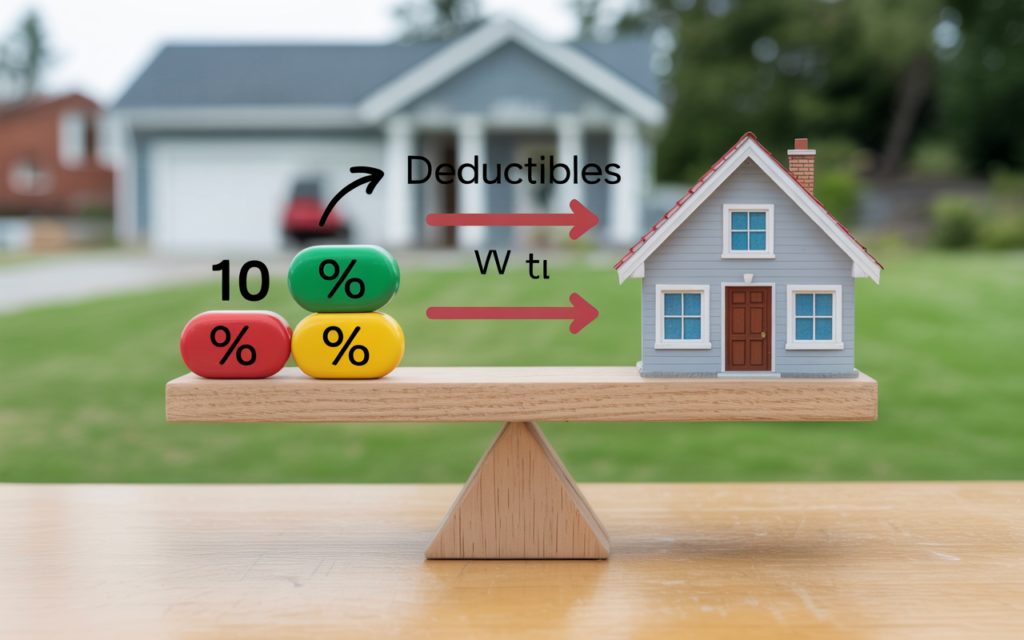
Understanding Percentage Deductibles
Unlike standard homeowners insurance, earthquake insurance generally uses a percentage-based deductible (usually 5% to 25%) calculated on your property’s insured value—not the claim amount.
Example Calculation:
- Home insured for $400,000
- Policy deductible: 10%
- You pay first $40,000; insurer pays the rest of the approved claim
Impact on Payouts
- High Out-of-Pocket Costs: Many smaller claims may not exceed the deductible.
- Multiple Deductibles: Depending on your policy, separate deductibles may apply to dwelling coverage, personal property, and detached structures.
Actionable Steps:
- Choose a deductible you can reasonably afford in the event of a disaster.
- Factor in local risk and rebuilding costs before selecting your policy structure.
- Clarify with your provider whether multiple deductibles could apply.
Earthquake Insurance Limits and Customization
Each component—dwelling, contents, loss of use—has its own policy limit dictating the maximum paid for a covered loss. Ensure these reflect realistic rebuilding costs, especially as construction prices rise.
Available Add-Ons and Riders
- Building Code Upgrade Rider: Extremely valuable for older homes.
- Increased Personal Property Coverage: Protects high-value assets or collections.
- Temporary Relocation Upgrades: Extends ALE for longer repair times.
- Loss Assessment Rider: For condo owners or properties with shared facilities.
Regional Differences in Earthquake Insurance: A Global Overview
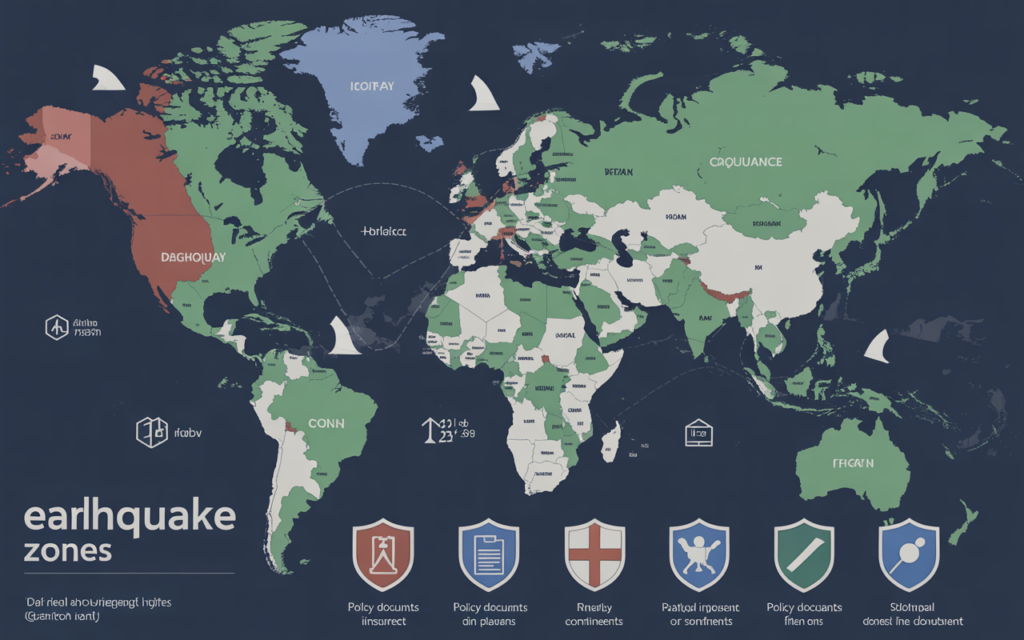
Regions with High and Low Earthquake Risk
- High Risk: California, Alaska, Japan, New Zealand, Chile, Turkey, Nepal, Indonesia, Mediterranean, and Pacific Ring of Fire nations.
- Mid-Range: Central United States (New Madrid fault zone), South Asia, parts of southern Europe and Africa.
- Low Risk: Most of Canada, northern Europe, West Africa, central Australia.
Premium and Deductible Variation
- High-risk areas have higher premiums and deductibles due to increased likelihood or potential severity of events.
- In some countries (e.g., Turkey, Japan), earthquake insurance may be compulsory or bundled with basic homeowners policies.
Earthquake Insurance in Nigeria and Africa
While destructive earthquakes are rare in Nigeria, the National Economic Council has begun exploring insurance solutions for catastrophic natural disasters, including earthquakes and floods, indicating an increasing awareness across Africa of the need for risk transfer products for such hazards.
For Nigerian homeowners:
- Standalone earthquake insurance may not yet be widely available.
- Regional insurers may integrate catastrophe protection as African markets evolve.
- Stay informed about public or private disaster insurance initiatives by local authorities and African reinsurance organizations.
Earthquake Insurance vs. Homeowners/Renters Insurance: Key Differences
| Feature | Homeowners Insurance | Earthquake Insurance |
|---|---|---|
| Earthquake Damage | No | Yes |
| Standard Perils (fire, theft) | Yes | No |
| Flood/Tsunami Damage | Sometimes (optional) | No |
| Personal Property | May cover some events | Yes (quake-caused only) |
| Additional Living Expenses | Fire/flood only | Yes (from insured earthquake) |
| Deductible Type | Flat amount | Percentage (5–25% of property) |
| Standalone/Rider | Base policy | Add-on or separate policy |
Flood or tsunami from an earthquake is usually not covered by earthquake insurance and generally requires a separate flood policy.
Real-Life Scenarios: How Earthquake Insurance Responds
Japan: Case Study
In 2016, a series of earthquakes severely damaged homes and infrastructure in Kumamoto, Japan. Homeowners with earthquake insurance received:
- Structural Repairs: Covered up to rebuilding cost, reflecting local construction standards and stringent codes.
- Personal Property Replacement: Televisions, appliances, and furniture replaced based on policy limits and receipts.
- Living Expenses: Funded temporary rental housing and daily living needs for more than seven weeks.
Turkey: Compulsory Earthquake Coverage
Since the devastating 1999 quake, Turkey mandates earthquake insurance (DASK) for residential properties. Coverage is standardized, but homeowners can buy supplemental riders for contents and higher limits as needed.
United States: Earthquake Insurance in California
In California, earthquake insurance is offered by both private companies and the state-run California Earthquake Authority (CEA). Deductibles are high, but policies are tailored for high-risk zones. After a major quake, most claims help with structural repairs, temporary housing, and even debris removal.
Africa: Emerging Coverage
While most insurers in Nigeria and sub-Saharan Africa have not traditionally offered earthquake-specific insurance, recent policy discussions and partnerships with international reinsurers aim to create comprehensive catastrophe insurance products for both earthquakes and floods, as regional exposure and urban development increase.
Advanced Tips for Maximizing Your Earthquake Insurance
1. Inventory Your Belongings
- Create a detailed inventory (photos/videos, receipts, serial numbers) to speed up claims and ensure proper reimbursement.
- Keep a copy off-site or digitized.
2. Retrofit Your Home
- Retrofitting, such as bolting the home to its foundation or reinforcing walls, may secure better insurance terms and lower your premium.
- In some regions, insurers require proof of upgrades before approving coverage.
3. Proactive Claim Preparation
- Understand your policy’s claim process—including necessary documentation, reporting timeline, and dispute resolution steps.
- Reporting promptly with evidence of damages boosts claim success rates.
4. Review Policy Annually
- Regularly update your policy as your home’s value and contents change.
- Ensure coverage limits keep pace with rising rebuilding or replacement costs.
5. Consider Bundled Catastrophe Insurance
- In developing markets or low-risk regions, comprehensive coverage may be found in bundled natural disaster insurance, often including earthquake, flood, storm, or fire.
How to Choose the Right Earthquake Insurance Policy: Action Steps

Step 1: Assess Your Geographic and Structural Risk
- Use seismic hazard maps, local history, and government resources to evaluate your property’s likelihood of earthquake exposure.
Step 2: Estimate Complete Rebuilding Costs
- Focus on current rebuilding costs, not just the market value. Factor in local construction prices, materials for upgrades, and debris removal costs.
Step 3: Shop Around and Compare
- Obtain multiple quotes, comparing not just price, but also coverage specifics (deductibles, exclusions, riders, customer reviews).
- In some places, your existing homeowners insurer may offer endorsements (add-ons); if not, investigate standalone policies.
Step 4: Review and Update Regularly
- Update your policy after home renovations, additions, or major new purchases.
Step 5: Understand All Terms
- Thoroughly review coverage limits, deductibles, exclusions, and the process for filing claims. Do not hesitate to ask your agent to explain anything unclear.
Common Myths and Misunderstandings About Earthquake Insurance
- “My home insurance already covers earthquakes.”
Most standard homeowners or renters policies exclude earthquake damage. Separate coverage is almost always necessary. - “Earthquake insurance is only for high-risk zones.”
While risk and premiums may be lower in some areas, earthquakes are possible in unexpected places; a single event can be devastating. - “Earthquake insurance isn’t worth the deductible.”
High deductibles can make smaller repairs uneconomical to claim, but catastrophic loss is where coverage truly pays off. - “Floods after quakes are always covered.”
Flood, tsunami, and water damage resulting from an earthquake require a separate policy.
Navigating Claims: What to Do When Disaster Strikes
- Contact your insurer ASAP—the sooner you notify, the smoother your process.
- Document everything—extensive photos, videos, inventory lists, and receipts boost your claim’s credibility.
- Keep damaged items until an adjuster inspects and approves disposal.
- Meet the adjuster—be available for site inspections and prepared to discuss pre-existing versus quake-caused damage.
- Stay organized—track all communication, expenses, and claim documents.
- Negotiate respectfully—clarify uncertainties, discuss disagreements, and request written explanations for any denied claims.
The Future of Earthquake Insurance: Innovations and Trends
- Parametric Insurance: Newer products pay out based on objective quake data (e.g., magnitude, proximity), streamlining claims for policyholders.
- Bundled Catastrophe Policies: In regions like Africa and the Caribbean, interest is rising in integrated catastrophe insurance products covering multiple perils at once.
- Government Partnerships: Initiatives are growing to make earthquake insurance more accessible and affordable, especially in disaster-prone but underinsured markets.
Frequently Asked Questions About What Earthquake Insurance Covers
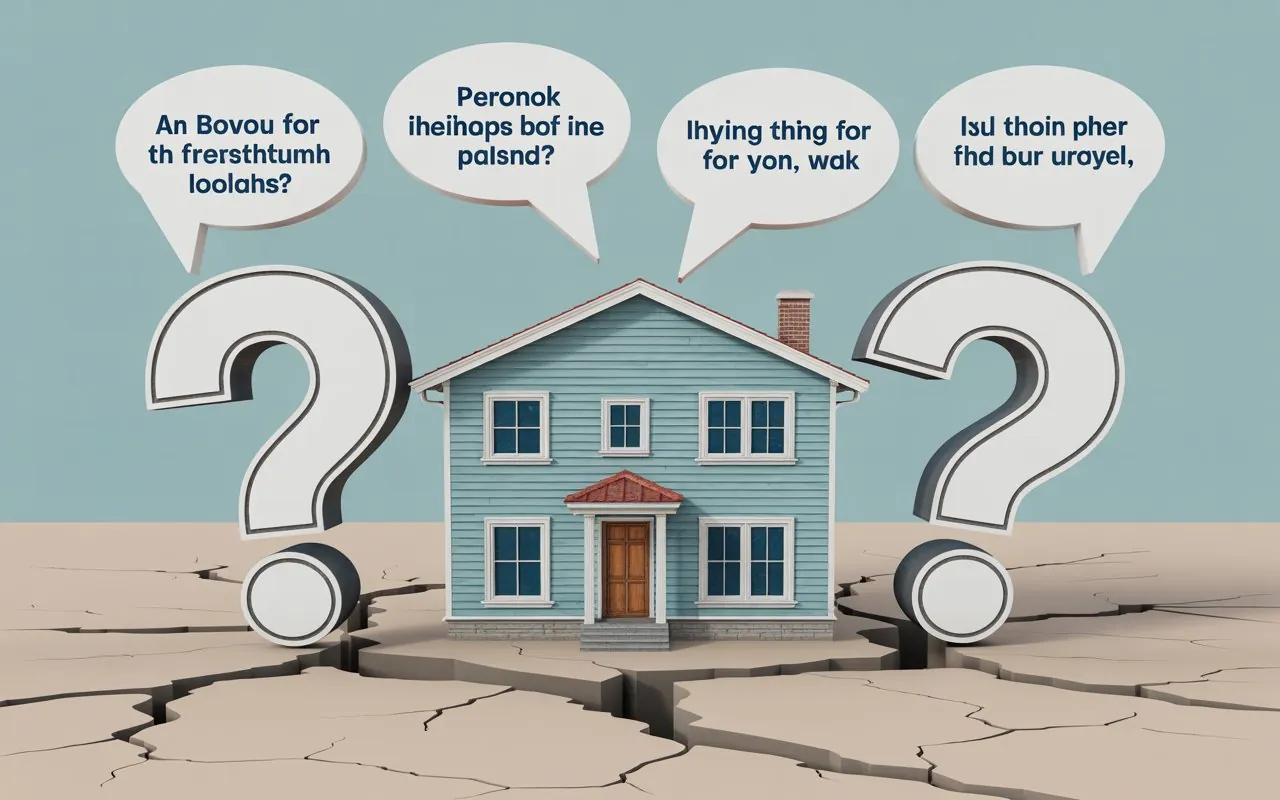
Does Earthquake Insurance Cover Aftershocks?
Yes, most policies cover aftershocks within a certain time window, usually 24–72 hours after the primary event. Always check your policy for the exact time period.
Are Renters Protected by Earthquake Insurance?
Yes, by purchasing a renter’s earthquake policy, tenants can protect their possessions and gain access to temporary housing coverage, even when the landlord is responsible for structural repairs.
Can You Get Earthquake Insurance After a Major Quake?
Most insurers set a waiting period—often 30–60 days—after a seismic event before selling new earthquake policies in the affected area. This prevents last-minute purchases after damage has already occurred.
Is Flood Damage From an Earthquake Covered?
No. Damage from earthquakes is separate from flood or tsunami damage. You need a specific flood insurance policy for coverage against water damage—even if the flood was quake-induced.
Are There Tax Benefits for Having Earthquake Insurance?
Premiums for earthquake insurance are generally not tax-deductible on personal homes. Businesses may claim them as an expense; consult with a tax professional for specific advisement in your region.
conclusion
Knowing what earthquake insurance covers isn’t just a box to tick for compliance or mortgage requirements: it’s a proactive investment in your family’s safety and future well-being. From safeguarding your physical home and prized possessions to ensuring a roof over your head while you rebuild, earthquake insurance forms a critical safety net worldwide.